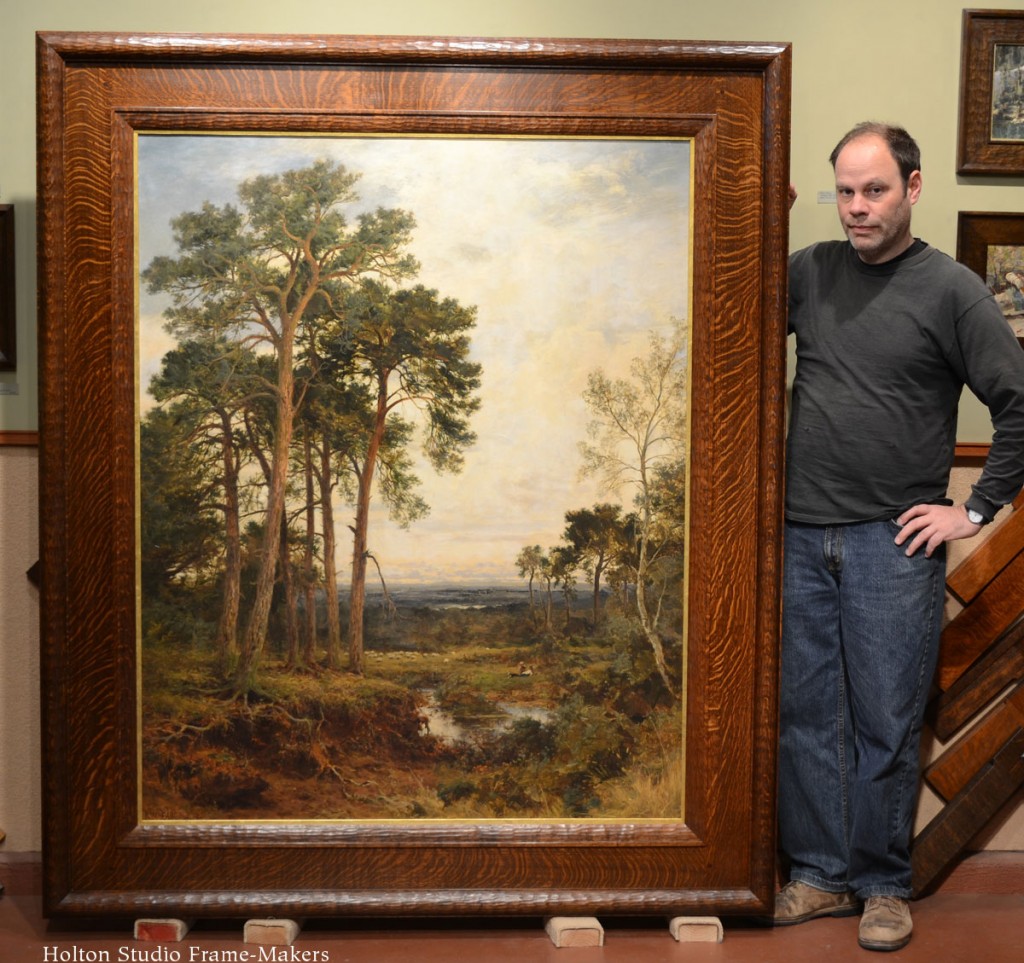We recently framed this great painting by the 19th century British landscape painter Benjamin Williams Leader, which demonstrates the artist’s deeply felt reverence for the great frame of life that John Ruskin, the foremost pastor of the arts in Britain in Leader’s day, called “The Earth Veil” (Modern Painters, Vol. V)—what we would call, with considerably less poetry (because of lesser reverence?), the biosphere. Our work starts with the same reverence for nature and its materials—specifically, in our case, wood. Ruskin struck a profound chord with many here in America, including Wallace Nutting, who wrote, in his study Furniture of the Pilgrim Century, of “The Obligation to Materials”:
We have no right to misuse wood. We did not make it. We found it, like air, water and grass. The only possible manner of acquiring any rights over it is by putting the stamp of character upon it. The theologians tell us of sins, as if we were under obligation to a spiritual world alone. But sheer wickedness in the use of materials ought to cause even a materialist to shudder. Wood is one of the best things we have. Whether Grinling Gibbons puts his tool to it or we make a milking stool of it, men will measure us by the manner of our handling it.
Only people with a sense of reverence for materials can make good citizens. A man must use wood well, or he will mistreat his neighbors.
Ruskin and Nutting understood the primacy of our relationship to the earth and its materials, not least of all for our moral character, effecting profoundly not only how we treat the earth but our fellows. Our engagement with the earth’s materials also shapes our engagement with each other. Paintings made with this foundational reverence and understanding deserve frames made in the same spirit—a spirit of love for life, the earth and its immeasurably wonderful creatures, trees.
.

Trevor Davis with corner samples used to design the Leader frame. The lower right sample is the one we used.
.
« Back to Blog

